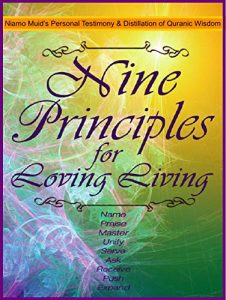The lack of affordable housing and health inequalities in central Brooklyn, student-led report
- 18
- Aug
Adi Talwar. Liberty Avenue in Brooklyn.
Housing and Health Inequalities: A lack of affordable housing continues to exacerbate health inequalities and financial problems in the predominantly black and Latin American neighborhoods of Central Brooklyn, and a team of student researchers are helping improve solutions for the community.
In a new report This month, local high school and college researchers from the Brooklyn Communities Collaborative (BCC) published the impact of insecure living conditions, high rents, and discriminatory policies on Central Brooklyn residents. The report, People-Focused Research: Health & Housing in Bedford-Stuyvesant, Brownsville & East New York, draws on responses and ideas from local residents to provide recommendations for meeting these needs – including expanding the existing community land trusts (CLTs) and the creation of an infrastructure to reduce extreme heat.
“Decades of divestment, redlining, predatory real estate practices, and flawed affordable housing plans by numerous New York City mayors have left black and brown residents of Central and East Brooklyn with less access to safe and affordable housing and limited their ability to build wealth,” the authors write Report.
The project team tried to propose solutions to these problems through participatory action research (PAR), a process that involves involving individuals affected by a problem at every stage of planning and making recommendations. The researchers sponsored the work of four previous studies conducted by BCC and its student teams that have influenced policies such as those of the state Vital Brooklyn Community development plan to improve health and housing in the region.
Many of the students involved in the PAR projects grew up in the college neighborhoods, a connection that East New York City Crystal Gilbert said motivated what she did as community service.
“Part of it is a little sad. I look at all of these statistics – the rates of tenant-burdened residents, the poor housing conditions. When you see it in print, it stands out and you can see the gravity of the situation, ”said Gilbert, a student at Brooklyn College.
“But we are working with the residents and trying to do the work to make the communities safer,” she added. “I see the church differently now. I see progress. ”
More than a third of East New York residents are heavily burdened with rent, which means they spend over 50 percent of their income on rent, the report said. The neighborhood also reported the highest rate of “heavy crowding” or with more than 1.5 people per room. More than 5 percent of households were severely overcrowded, compared with 3.9 percent in Bedford-Stuyvesant and 1.7 percent in Brownsville.
Hustle and bustle is related to poverty and associated with a higher risk of COVID-19how New Yorkers – typically people of color and immigrants – populate communal spaces, with tenants sleeping on kitchen floors, living room couches, and cluttered bedrooms. The report calls on the city’s Department of Housing Preservation and Development to address loopholes in the enforcement of the code and highlights the work of nonprofits to hold landlords and the city accountable for correcting dangerous life situations.
Gilbert said the conditions demonstrated the need for affordable housing, particularly housing for families and individuals affected by homelessness. CLTs, like an ongoing project in East New York, would provide that kind of vital housing, she said. Yet few people seemed to know the concept of CLTs – organizations that own and oversee land for permanently affordable housing instead of making profits through property sales and speculation.
She and a colleague, Jeffannie O’Garro, a student at Medgar Evers College, created a presentation to educate community members about CLTs. “That’s something we’re all pushing for, I think: lasting affordability, community values and awareness,” Gilbert said.
The BCC students also examined the disproportionate effects of the heat waves caused by the climate crisis on Central and East Brooklyn.
All three study quarters rank at the highest level (5 out of 5) on the Heat Vulnerability Index (HVI), a stressor that can worsen pre-existing health conditions and worsen the harmful effects of COVID-19, the report said. In New York City and in urban areas around the country Lower-income neighborhoods tend to have the hottest temperatures– the result of limited parking spaces, overcrowded apartments and a lack of green infrastructure.
To lower the temperature and take the strain off residents, the report’s authors recommend installing more shadow structures, possibly through city-wide design competitions or public art installations. The authors also suggest working with developers and landlords to install “green roofs” and “green walls” to reduce heat in buildings and near locations.
BCC has been running PAR projects in Brooklyn since 2016 in collaboration with Maimonides Medical Center, Community Care of Brooklyn, The East Brooklyn Call to Action and the Brooklyn Workers Council.
BCC associate director Gretchen Susi said her organization’s staff and student researchers will continue to work with residents and community groups to advance the goals of equitable housing in Bedford-Stuyvesant, Brownsville and East New York.
“Health and housing were a constant concern in all neighborhoods,” said Susi.
Medical student Mila Mirzakandova worked on a previous initiative while she was a student at Brooklyn College, and said working together helped her better understand the social determinants of health.
“It’s so important to know not just how to treat patients, but why they get sick in the first place [and] so many things come from your environment, ”said Mirzakandova. “You can’t give everyone the same treatment plans.”
The three Brooklyn neighborhoods featured in the report have been plagued by misguided, discriminatory, and flawed housing policies for decades. It is crucial, said Mirzakandova, “to have the direct voice of the community, as unfiltered as possible, in order to bring resources to the community with as few threads as possible”.




